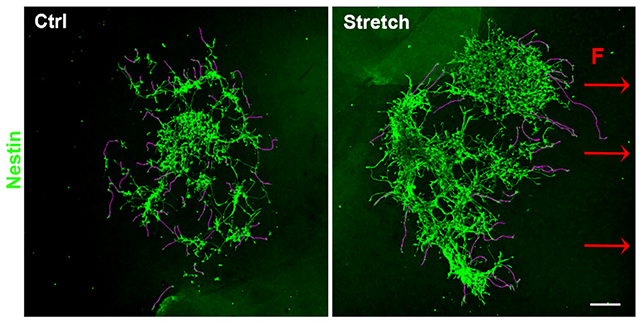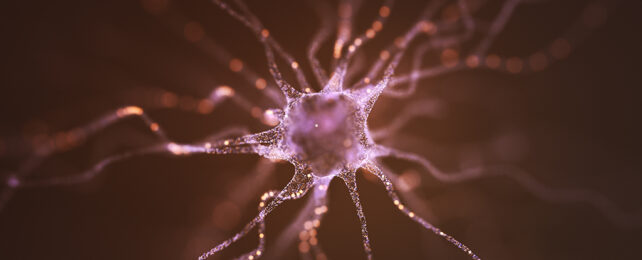Broken connections between brain cells play a critical role in multiple neurodegenerative conditions, including Parkinson's disease. Scientists have now come up with a novel way of repairing our neural wiring.
A team led by University of Pisa biologist Sara De Vincentiis used mini-brains grown in a lab to test a technique they're calling "nano-pulling", using tiny magnetic particles controlled by magnetic fields to guide axons (connective nerve fibers) into place.
With further development, the researchers believe this approach could help restore the nigrostriatal pathway, a vital connection in motor control that is compromised in Parkinson's patients.
"This study demonstrates the potential of nano-pulling as an emerging technique to promote directed reinnervation within the central nervous system," the researchers write in their published paper.
Related: Parkinson's Discovery Suggests We Could Have an FDA-Approved Treatment Already
Parkinson's disease is partially the result of damage to brain cells that make the chemical messenger dopamine. Transplanting dopamine-producing tissue has shown some promise as a therapy, but these new cells struggle to hook themselves up to host brain tissue once they're in place.
Some gentle coaxing with magnetic particles could help fix that problem, and get us another step closer to effective treatments.

Nano-pulling was shown to increase axon length and get connectors moving in the right direction. It also made the cells more stable, and produced more of the axon branches and synaptic vesicles (tiny packages of neurotransmitters) that are required to build neuron links and eventually restore the nigrostriatal pathway.
As an added bonus, the magnetic particles used in the experiment have been approved safe for use in medical procedures, including MRI scans. No damage was seen in the mini-brains used by the researchers.
"We successfully achieved guided neurite growth, resulting in increased neurite length and branching, thereby reinforcing the versatility and potential therapeutic applications of this technique," write the researchers.
There's no cure yet for Parkinson's disease, but we're getting better at understanding how it gets started and the different risk factors involved. Like Alzheimer's, it's a complex disease, and it can be difficult to distinguish between causes and the consequences of having it.
Work continues to find treatments that can stop Parkinson's or slow it down. As with this latest study, a lot of the focus is on protecting the brain from damage, and trying to get dopamine production back up and running.
"Parkinson's disease is the second most frequent age-related neurodegenerative disease globally," write the researchers.
"Parkinson's disease prevalence has doubled over the past 25 years, with an alarming rise to 13 million patients projected by 2040."
The research has been published in Advanced Science.
